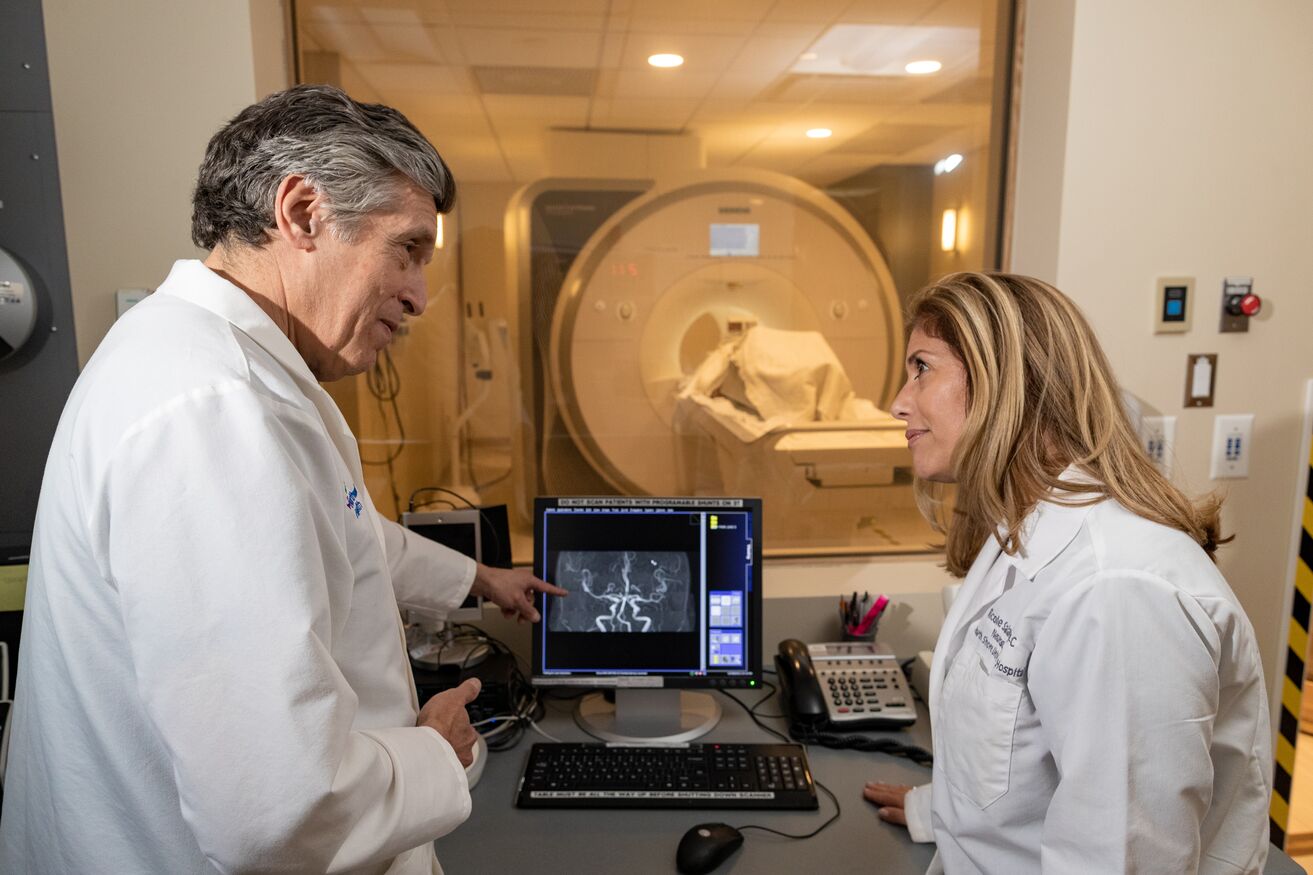Our representatives are available to schedule your appointment Monday through Friday from 9am to 5pm.
For a Northwell ambulance, call
(833) 259-2367.

In 2017, the death of a North Carolina mother of four garnered national attention. She left work after telling her husband she had an “excruciating headache.”
Moments later, she died of a ruptured aneurysm.
This story happens too often, where people immediately think they have migraines when in fact they need emergency care. By understanding each condition, we can improve outcomes and save lives.
Migraines and aneurysms are very different. Migraines are more common and are a tolerable type of headache brought on by precipitating factors. Severe throbbing pain or a pulsing sensation on one side of your head are the hallmarks. They can last for hours or days. The pain can be debilitating.
Typical symptoms include nausea, vomiting and extreme sensitivity to light and sound. Known as aura, migraines have warning signs that include blind spots and flashes of light. Migraines are treated with drugs and depending on the frequency and severity, can include prevention medications.
Aneurysms are defined by an enlargement of an artery at a branch point caused by a weakened arterial wall. When they rupture, they cause a subarachnoid hemorrhage (bleeding around the brain).
This is a completely different condition than migraines. Mostly, patients are without symptoms until the aneurysm ruptures — a “thunder clap” that quickly transitions from a headache to a cataclysmic explosive event. Those suffering will complain of the “worst headache of their life.”

According to the Brain Aneurysm Foundation, nearly six million people in the US have an unruptured brain aneurysm (1 in 50). About 30,000 will rupture.
If you have a severe headache — pain you’ve never felt before — go to the emergency department immediately. Time is critical. It’s better to be cautious because ruptured aneurysms can be devastating and life-threatening.
Brain aneurysms can be treated in several ways, depending on the severity. They include endovascular coiling, clipping, embolization, stenting and cerebral bypass.
Untreated minor subarachnoid hemorrhages are called sentinel bleeds. This is known as a “warning leak.” If a sentinel bleed is missed, it can lead to a severe aneurysmal sub arachnoid bleed.
Aneurysms are a disease that’s under the radar. Families often are unaware of the condition or what to do in the case of symptoms. If time allows, find treatment in centers that have a high volume and clinical expertise, such as Northwell Health, which treats about 200 aneurysms each year.
David Chalif, MD, is director of neurosurgery at Southside Hospital. He has more than 33 years of experience in treating complex cerebral aneurysms, vascular malformations and brain tumors, and helped develop Northwell Health’s Brain Aneurysm Center.
Our representatives are available to schedule your appointment Monday through Friday from 9am to 5pm.
For a Northwell ambulance, call
(833) 259-2367.